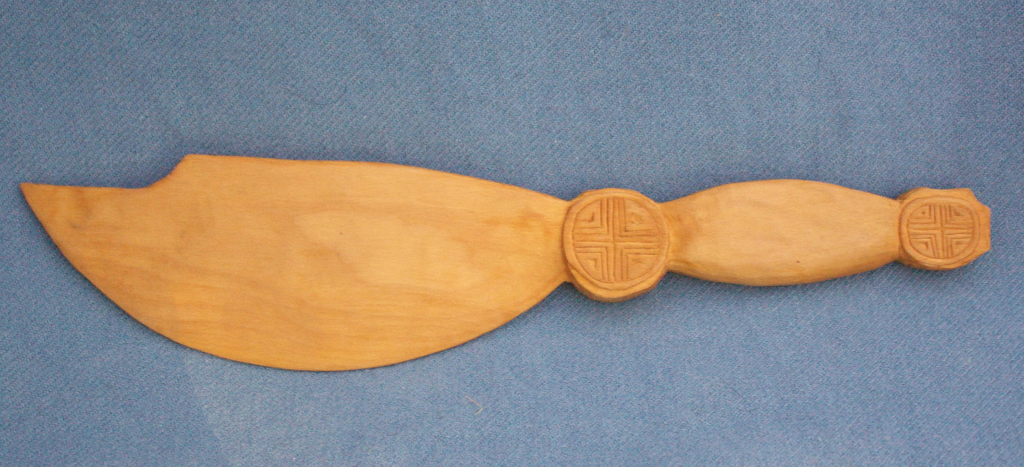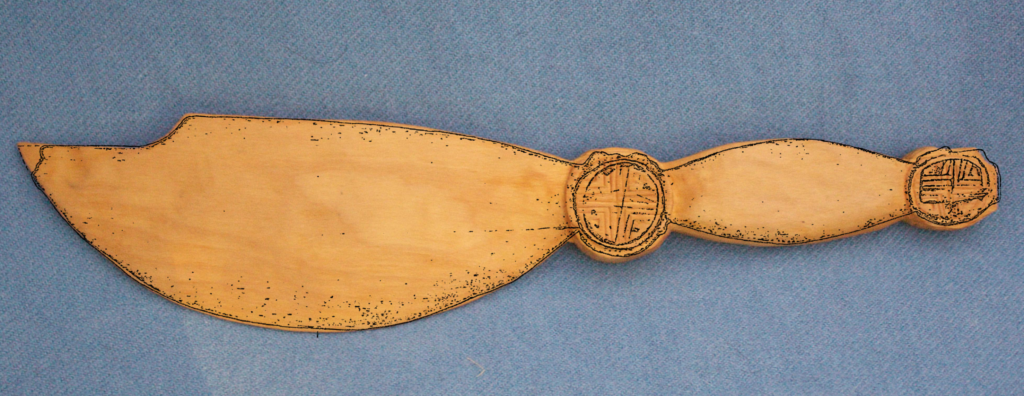Here are a few more pics from the making of the dyeing experiment card...
It took me a while of thinking on how to best present the results. I wanted them to be comparable across both the different metals and the different runs of the experiment. Because of the lack of a reference in the add-on 2013, there were exactly three different samples for each data point, which made things nicely line up in the end.
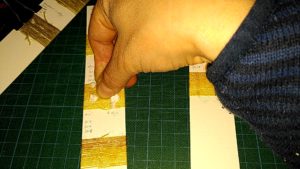
The cardboard strips were labelled on the back, I wound the threads on and fixed them temporarily with sticky tape, then glued them into place with PVA wood glue. I tried to line them up as perfectly as possible, and in the end, there were only very slight variations from the perfect line.
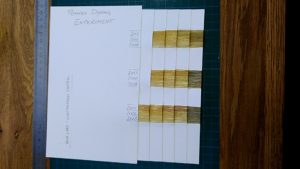
Another thing I pondered for a while: whether I would write the info necessary by hand, or print it on. I decided, in the end, to do it by hand - there were bits that I would need to do by hand anyways, as I had not printed the metal name on the strips before winding the threads on, and now it was too late. Because I thought it would be weirder to mix than to do it all by hand... well, there you go.
I chose pencil for the writing - because that is very lightfast, and I didn't have a pen that I was sure would be appropriately lightfast. (Yes, I could have used iron gall ink - in theory, but I am not practised at handlettering with that, and, well... perfectionism, anyone?).
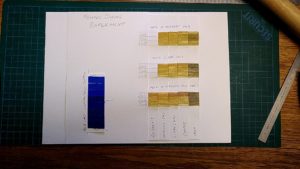
As the final thing, I added a blue card - because I could. Because the exhibition and the light exposure of the samples might just as well serve as a fade test; for that, the strips with yarn are layered so they are half exposed and half protected. The blue card is also half exposed and half protected.
I already did a lightfastness test with samples from the last experiment run, in that case fabric samples, but there was none yet with the yarns from that or the previous runs. This will be remedied now! It is, obviously, not a really perfect and proper test as the yarns have seen a few hours (unknown amounts...) of indoor light before in their existence, but it's better than not doing the test at all, or than not adding the bluecard for the reference... so. There you go.
The whole assembly was then glued to another carrier layer of cardboard, and then everything went into a parcel and on its merry way to the exhibition. I hope it will be interesting for the visitors!
It took me a while of thinking on how to best present the results. I wanted them to be comparable across both the different metals and the different runs of the experiment. Because of the lack of a reference in the add-on 2013, there were exactly three different samples for each data point, which made things nicely line up in the end.

The cardboard strips were labelled on the back, I wound the threads on and fixed them temporarily with sticky tape, then glued them into place with PVA wood glue. I tried to line them up as perfectly as possible, and in the end, there were only very slight variations from the perfect line.

Another thing I pondered for a while: whether I would write the info necessary by hand, or print it on. I decided, in the end, to do it by hand - there were bits that I would need to do by hand anyways, as I had not printed the metal name on the strips before winding the threads on, and now it was too late. Because I thought it would be weirder to mix than to do it all by hand... well, there you go.
I chose pencil for the writing - because that is very lightfast, and I didn't have a pen that I was sure would be appropriately lightfast. (Yes, I could have used iron gall ink - in theory, but I am not practised at handlettering with that, and, well... perfectionism, anyone?).

As the final thing, I added a blue card - because I could. Because the exhibition and the light exposure of the samples might just as well serve as a fade test; for that, the strips with yarn are layered so they are half exposed and half protected. The blue card is also half exposed and half protected.
I already did a lightfastness test with samples from the last experiment run, in that case fabric samples, but there was none yet with the yarns from that or the previous runs. This will be remedied now! It is, obviously, not a really perfect and proper test as the yarns have seen a few hours (unknown amounts...) of indoor light before in their existence, but it's better than not doing the test at all, or than not adding the bluecard for the reference... so. There you go.
The whole assembly was then glued to another carrier layer of cardboard, and then everything went into a parcel and on its merry way to the exhibition. I hope it will be interesting for the visitors!




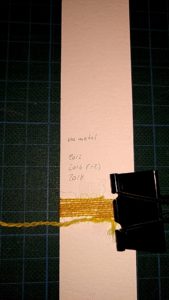
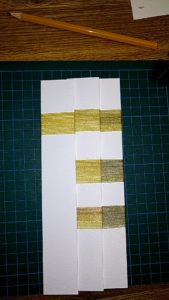
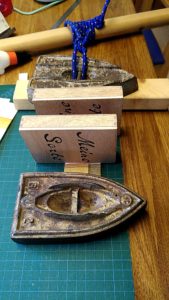 Pressing with weights until the glue has set...
Pressing with weights until the glue has set...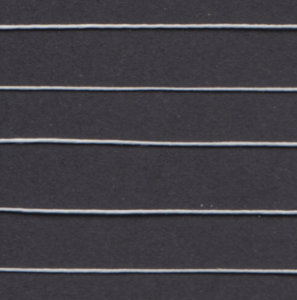 Three-ply linen yarn - that is my
Three-ply linen yarn - that is my 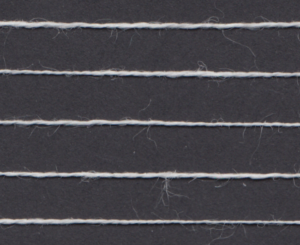 Two-ply linen yarn, about the same thickness - that is
Two-ply linen yarn, about the same thickness - that is 